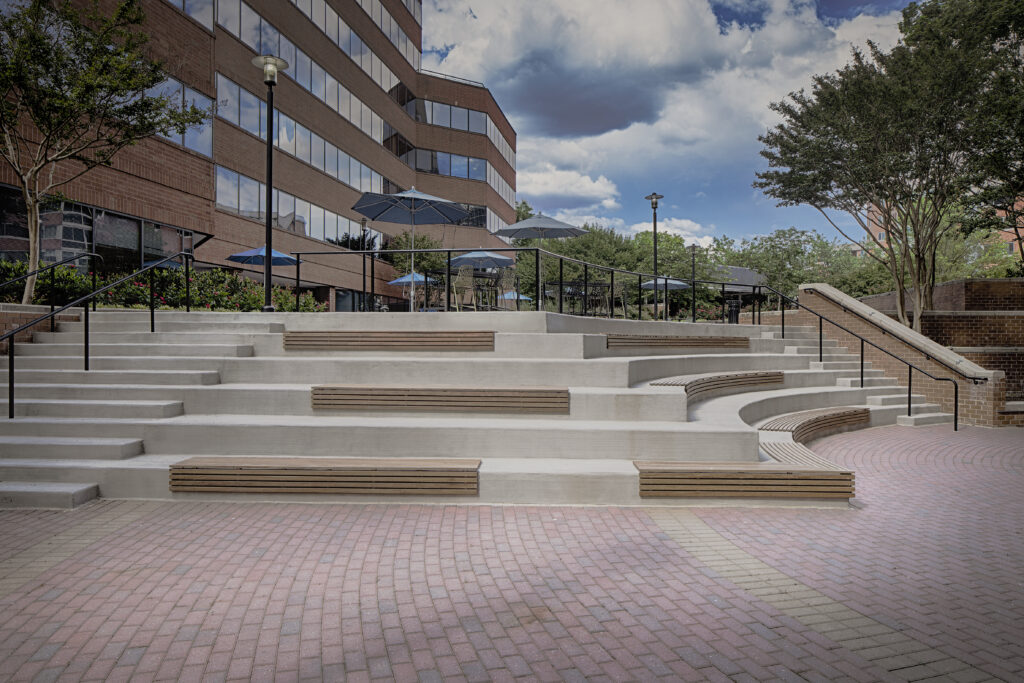We’re headed back to the office. After 15 months of working remotely, and with vaccination rates on the rise, organizations are beginning to consider what it will look like when staff return. Because one thing is clear – in some way, shape, or form, the office is here to stay.
Still, the work environment has been changing for some time – even before the pandemic. With the sophistication of technology improving the ease with which employees can work remotely, and with the increased emphasis on employee health and well-being, a changed work environment seems inevitable. It’s just happening faster and more abruptly than expected.
Globally, employers have realized that things will continue to change. But what, ultimately, does that look like? What role will the physical workplace serve in this brave new world?
The answer might look different for every organization. But one thing is certain: flexibility will be the key to success.

DBI has a been pioneer in the field, creating flexible, one-of-a-kind office designs since 1973. We have seen first-hand the positive effects that human-oriented design has on workplace productivity, teamwork, and employee wellness.
As a concept, wellness is now situated at the forefront of everyone’s minds, too. A trend that was accelerating prior to the pandemic, wellness is now a factor of primary concern to employees and employers everywhere. Staff want to know that their organization cares for their physical well-being, and organizations understand the value of protecting the health and safety of their employees. This mutual interest has led to a new perspective on how the health of the employee and the health of the organization are intrinsically intertwined.
Companies that prioritize employee health and wellness see their investment pay off in the form of a more stable, happier, more productive workforce. Director of Interiors Robyn Rubino, a WELL-accredited designer, emphasized the importance of designing with the wellness of employees in mind. “COVID-19 definitely pushed the fast-forward button on the wellness aspect,” Rubino observed. “I think the WELL Building Institute has done a great job keeping their finger on the pulse of client and tenant needs and people’s experiences, providing opportunities for us to optimize the health of each individual person.”
One way of creating a flexible space can mean taking into consideration differences — different kinds of workflows, different mixes of in-office and remote work, the need for different kinds of spaces. By creating different kinds of spaces that can accommodate anything from large, formal meetings to informal brainstorming sessions, to solo, heads-down work, employees are empowered to select the environment that brings out the best in them, based on their needs. Building and fostering a culture of collaboration and choice ultimately nurtures better ideas, and sets the stage for better outcomes.

Leveraging technology to increase flexibility in the workplace is on the rise as well. Prior to the pandemic, many organizations still treated technology simply as the “business machines” of the past – typewriters and adding machines, necessary to successful business practices, but hardly as a door to a vastly different worklife that it has turned out to be. Now, after months and months of virtual meetings and instant messaging, companies are changing their tune, finally recognizing the game-changing nature of technology in the workplace. Those organizations that choose to embrace technology, that leverage technology to the best advantage of their business will likewise leverage the flexibility that it provides. But technology can only do so much – we still need human connection.
Part of what draws employees to the office is the sense of community and camaraderie they experience with their coworkers, so continuing to provide spaces that create an outlet for appropriate socialization and bonding is key to promoting a healthy workplace culture. Even with concerns over health and safety, communal spaces are still a fundamental part of a healthy work environment. “We can only do so much over Zoom,” said Rubino. “We have really missed being together the last 15 months. Now that we are safe to come back together, those kinds of communal spaces will give us that connection that we’ve been craving.”
All these different aspects of workplace flexibility support and strengthen a company’s culture. And a strong culture is a determining factor in a company’s success.

Ultimately, it’s a question of competitiveness. To attract the top talent in a competitive job market, companies need to offer a work environment that is attractive to potential employees. This includes a number of factors, including workplace flexibility, work-life balance, company culture, and more. Being able to offer a unique, flexible workspace that allows for multiple modes of working and that supports all different kinds of workers will help organizations stand out in the marketplace as a company employees want to go to work for.
So, is it time for the office to finally break free of the constraint of the cubicle and rigid 9-5 workday? Only time will tell, but we at DBI know from experience that a flexible work environment is where people and ideas thrive. And that’s where the future is born.
